
No Data Yet

## 执行摘要 第三季度财报显示市场碎片化,公司业绩与大盘指数日益脱节。人力资源软件行业呈现强劲增长,反映出劳动力市场稳定。相比之下,电信等成熟行业则展现出不同的战略路径,**AT&T** 大力投资光纤和5G频谱,而 **Verizon** 则优先考虑无线定价纪律。这种多样化的格局,也包括消费必需品和保险领域的大额股东回报计划,表明投资者必须关注公司层面的执行情况,而非统一的行业趋势。 ## 事件详情:多行业视角 对近期财报电话会议和公司指导的审视突显了这些对比鲜明的叙述: * **人力资源软件行业:** 该行业表现出显著的实力。**Paychex (PAYX)** 公布第三季度收入为15.4亿美元,同比增长16.8%,符合分析师预期。同时,**Paylocity (PCTY)** 表现出色,第三季度收入为4.082亿美元,同比增长12.5%,超出分析师预期1.9%。这一表现表明对薪资和人力资源服务的需求持续存在。 * **电信行业:** 两大巨头之间存在明显的战略分歧。**Verizon (VZ)** 公布第三季度收入为338.2亿美元,受无线服务收入增长2.1%的推动。其重点仍是客户保留和利用其优质网络。相比之下,**AT&T (T)** 的光纤宽带收入飙升16.8%至22亿美元,验证了其融合战略。此外,AT&T 宣布了一项230亿美元的重大频谱收购,以扩大其5G容量,预示着对未来基础设施的巨额投资。 * **消费必需品与保险:** 老牌公司正在优先考虑股东回报。**宝洁 (PG)** 持续其68年的股息增长记录,突显了其作为收益投资者的防御性“黄金标准”声誉。在保险行业,**Progressive (PGR)** 宣布了高达13.50美元的年度股息,尽管面临佛罗里达州因“超额利润”可能产生的9.5亿美元保单持有人信贷,但仍显示出对其资本状况的信心。 ## 市场影响 这些不同的结果对投资者产生不同的影响。**PAYX** 和 **PCTY** 等人力资源技术股票的强劲增长表明,企业对效率和劳动力管理的投资仍然是优先事项。在电信领域,市场被要求在 **Verizon** 稳定的高收益无线模式和 **AT&T** 风险更高、增长更快的融合和5G扩张策略之间做出选择。 **Progressive (PGR)** 的巨额股息,虽然对股东有利,但也凸显了未来增长或股票回购的潜在资本限制。它还引入了与其对佛罗里达州巨额保单持有人信贷的会计处理相关的近期波动性。 ## 专家评论 展望2026年,一些专家认为,受益于持续经济活动的行业具有价值。Hightower Advisors 首席投资策略师 Stephanie Link 在评论工业领域时,指出了对 **联合太平洋 (UNP)** 等公司的积极展望。 > “从基本面来看,我认为明年经济将继续强劲,这将带来更好的销量,并带来两位数的盈利增长。然后在此基础上,您再考虑成本效率、服务和生产力……您可以看到两位数的盈利增长和利润率扩张。” 这种情绪表明,除了科技和电信之外,执行力强的工业和运输公司也可能提供引人注目的增长故事。 ## 更广泛的背景 第三季度财报季在复杂的宏观经济背景下展开。美联储近期将目标利率下调至3.50%-3.75%的范围,可能缓解金融状况,但也预示着对经济放缓的担忧。各公司反应不同。**AT&T** 和 **联合太平洋** 正在寻求重大收购以确保长期增长,而像 **宝洁** 这样的防御性公司和像 **Verizon** 这样以收入为重点的股票则通过股息来强化其价值主张。这种缺乏统一市场主题的情况突显了一个需要深入、具体行业分析才能识别价值的环境。

## 执行摘要 以**菲利普莫里斯国际(PM)**为代表的防御性支柱股股价多年来的显著上涨,促使市场对估值进行全面重新评估。投资者现在正在权衡这些老牌公司的增长前景是否已在其股价中得到反映。这项分析是在专家评论指出,市场可能从技术驱动型成长股转向有望受益于更广泛经济加速的周期性行业的背景下进行的。 ## 估值难题 **菲利普莫里斯国际**经历了显著的增长,其股价年初至今上涨约31%,过去三年上涨81%。这一表现使其估值受到高度关注。投资者面临的核心问题是,该公司向无烟产品战略转型是否代表着持续的增长空间,或者其未来潜力是否已计入股价。这种不确定性因已知的风险而加剧,包括不断变化的监管环境以及新产品采用率可能减缓。 ## 增长视野的转变 宏观经济前景的变化增加了复杂性。根据**高盛**最近的一份报告,市场可能低估了预计在2026年出现的更广泛的经济繁荣。他们的分析预测,每股收益(EPS)增长将在周期性行业中最为显著。 > “在高盛分析师指出,在行业层面,我们预计2026年经济增长的加速将最大程度地提振周期性行业的每股收益增长,包括工业、材料和非必需消费品行业。” 这一预测表明市场领导地位可能发生转变。例如,高盛预计工业公司的每股收益增长将从4%加速到15%,而信息技术每股收益增长预计将从2025年的26%放缓到2026年的24%。这一观点鼓励在主导的AI和技术叙事之外,采取更广泛的投资视角。 ## 寻求持久收益 在这种环境下,可靠的派息股票的吸引力依然强劲,尽管估值是关键考量。股息贵族市场是一个有用的基准。**宝洁(PG)**拥有68年的股息增长历史,常被认为是可预测性的“黄金标准”,市盈率为23倍。同样,**强生(JNJ)**因其在防御性医疗保健领域的稳定性以及62年的股息增长记录而备受推崇。 相比之下,能源巨头**埃克森美孚(XOM)**提供有吸引力的收益,并有42年的股息增长支持,但其表现仍受制于大宗商品价格固有的周期性。这些例子说明了投资者在收益、估值和对经济周期的敏感性之间面临的权衡。 ## 更广泛的背景:基础设施作为非人工智能增长载体 除了传统的防御性和周期性投资,投资者还在识别其他基本需求领域。电网技术已成为一个重要的增长领域,其驱动力是长期的基础设施需求,而非以人工智能为中心的热潮。**纳斯达克OMX清洁能源智能电网基础设施指数**今年已飙升约30%,跑赢了更广泛的纳斯达克100指数。 这一增长的基础是现代化老化的电网、整合可再生能源以及满足数据中心不断飙升的电力需求的迫切需要。**摩根大通**和其他公司的分析师将此视为一个“数十年投资周期”,表明在对经济发展至关重要的基础性领域存在机遇,且独立于当前的技术趋势。
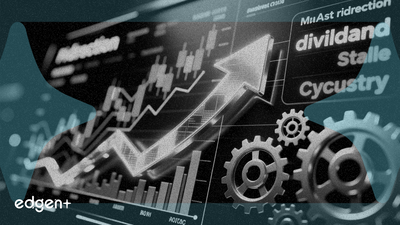
## 执行摘要 随着市场为2026年做准备,前瞻性分析表明投资者关注点将发生重大转变。虽然**万事达卡**等老牌公司表现出持续的财务健康—五年收入复合年增长率为15.1%,每股收益复合年增长率为19%—但增长的主要驱动力预计将发生变化。专家分析指出,周期性行业和稳定的、派发股息的股票将成为超额收益的来源,超越了大型科技股的集中收益。 ## 详情 最近的财务报告和机构预测正在塑造未来一年的投资前景。**高盛**发布了一份报告,预测2026年经济活动和公司盈利将普遍加速,预计标准普尔500指数每股收益将增长12%。这一增长预计将由周期性行业主导,工业、材料和非必需消费品行业的每股收益增长预计将显著反弹。例如,工业公司的每股收益增长预计将从4%加速到15%。 与此同时,对派发股息股票的分析强调了对可靠性的关注。**宝洁 (PG)** 拥有连续68年增加股息的历史,在其2026年第一季度业绩中报告净收入跃升21%至47.8亿美元,经营现金流飙升26%。同样,保持62年股息增长记录的**强生 (JNJ)** 在2025年第三季度收入增长6.8%至240亿美元。 **Progressive (PGR)** 是公司特定事件的一个案例研究。该保险公司于2025年12月5日宣布了一项可观的**13.50美元年度股息**,将于2026年1月8日支付。这一行动与佛罗里达州的一项重大监管进展并存,该公司在该州面临与“超额利润”计算相关的潜在**9.5亿美元保单持有人信贷支出**。股息代表直接资本回报,而信贷则突显了盈利能力和州级监管之间复杂的相互作用。 ## 市场影响 新兴数据表明,行业领导地位发生了明显转变。据高盛称,周期性股票已连续14个交易日跑赢防御性股票—这是15年多以来最长的一次。这一趋势意味着投资者开始计入比此前预期更强劲的经济环境。 对收益的需求是另一个关键因素,特别是在美联储最近决定将联邦基金利率目标下调至3.50%-3.75%的范围之后。在这种环境下,股息贵族提供的稳定收益以及Progressive等公司的大额一次性派息对注重收益的投资者来说变得越来越有吸引力。 此外,市场对“七巨头”表现出更大的估值纪律。分析师共识表明,在人工智能芯片繁荣的推动下,**英伟达 (NVDA)** 潜在上涨空间为39%。然而,同样的共识预测**特斯拉 (TSLA)** 潜在下跌空间为12%,而**苹果 (AAPL)** 和**Alphabet (GOOGL)** 的上涨空间微乎其微,这表明投资方式更加 selective。 ## 专家评论 顶级金融机构对预期的市场轮换直言不讳。 > “尽管在我们的客户交流中出现了周期性反弹和普遍的经济乐观情绪,但市场似乎并未完全消化2026年可能出现的经济加速,”**高盛**的分析师表示。“我们预计2026年经济增长的加速将最大程度地提振周期性行业的每股收益增长。” 《Motley Fool》汇编的华尔街分析反映了这种敏锐的情绪。虽然**亚马逊 (AMZN)** 和**微软 (MSFT)** 被看好,潜在上涨空间分别为28%和29%,但其他科技巨头的前景则更为低迷。这种分歧突显了从被动、指数级科技敞口转向关注个别公司基本面和行业特定顺风的转变。 ## 更广泛的背景 宏观经济背景至关重要。美联储的货币政策,以2025年12月10日的降息为标志,旨在支持经济活动,这直接有利于对经济增长敏感的周期性行业。然而,对于拥有大量投资组合的保险公司和其他金融公司而言,较低的利率对再投资收入构成了长期不利因素。 除了公开市场,专业服务行业的数据提供了积极的经济信号。独立会计师事务所协会**PrimeGlobal**报告称,其成员的总收入增长了19%,达到64亿美元。这表明强劲的商业活动和企业支出,特别是在人工智能采用和ESG服务等高增长领域,这些领域预计将成为未来五年增长最快的服务领域。

## 执行摘要 美国国债收益率曲线,一个历史上可靠的经济下行预测指标,已正式解除倒挂,这一发展传统上预示着经济衰退迫在眉睫。曲线的这种变陡发生在全球经济复杂且数据冲突的背景下。尽管人工智能的繁荣推动了美国股市的韧性,但潜在的弱点依然存在,包括劳动力市场停滞、长期借贷成本高企以及中国经济的显著放缓。市场高度集中于少数科技股,进一步放大了脆弱性。 ## 事件详情 在2022年开始的长期倒挂之后,美国国债收益率曲线已经变陡,长期收益率现在高于短期收益率。截至2025年12月初,基准**10年期国债**收益率为4.163%,而**2年期国债**收益率为3.512%。从历史上看,曲线的解除倒挂,而非最初的倒挂,才是最直接预示经济衰退的事件。刚刚结束的倒挂周期的深度和持续时间超过了以往衰退前的时期,导致分析师预测潜在的经济下行可能比最近的收缩更为严重。这种动态反映了投资者对长期财政政策和通胀的担忧,尽管美联储已开始转向,在2025年12月实行了25个基点的降息。 ## 市场影响 主要的市场影响是股市大幅回调的风险增加。近期股市反弹集中在**“七巨头”**——**Alphabet**、**Amazon.com**、**Apple**、**Meta Platforms**、**Microsoft**、**Nvidia**和**Tesla**——它们现在占标普500总价值的三分之一以上。**Oracle**和**Broadcom**等科技巨头对人工智能盈利能力的警告已引起市场担忧。经济衰退可能会引发大规模抛售,这些估值很高的科技股尤其容易受到影响。在大宗商品市场,全球经济放缓预计将压低工业原材料价格,但预计会出现“大分化”。对绿色能源转型至关重要的金属,如铜和铝,可能需求持续,而石油价格预计将面临供应过剩和全球需求减弱带来的下行压力。 ## 专家评论 经济学家之间的市场情绪反映出高度谨慎。穆迪分析公司首席经济学家马克·赞迪表示,虽然美国可能在2026年避免衰退,“但不能再出任何差错。我们已经岌岌可危。”他强调市场对人工智能部门的敞口是一个关键的脆弱性。德勤消费品业务负责人埃文·希恩也呼应了这种情绪,他观察到经济两极分化,表示“我认为经济的下半部分在某种程度上已经处于衰退之中。”这种消费者健康状况的分歧凸显了消费者支出的不稳定性,消费者支出约占美国GDP的70%,但越来越多地由最富有的10%的收入者驱动。 ## 更广泛的背景 美国收益率曲线的变化并非孤立发生。全球经济正面临严峻挑战,最显著的是中国,其固定资产投资正面临三十多年来的首次年度下降。这个世界第二大经济体由严重的房地产危机驱动的放缓,正在抑制全球增长前景并减少对大宗商品的需求。脆弱的美国国内经济、减速的全球环境以及2022-2024年激进货币紧缩的滞后效应相结合,造成了岌岌可危的前景。尽管**美联储**已开始放松周期以支持疲软的劳动力市场,但其实现软着陆的能力受到这些复合的国内和国际压力的严重限制。
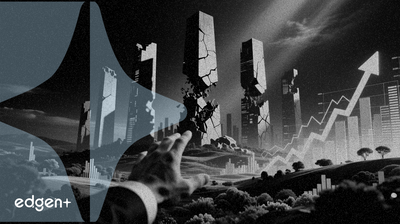
## 执行摘要 ProShares S&P 中盘股 400 股息贵族 ETF (REGL) 正在吸引关注,因为投资者正在评估超越广义、市值加权指数的策略。该基金通过关注具有长期股息增长记录的中型公司,提供了一种独特的方法。 ## 工具详情 REGL 提供了对 **S&P 中盘股 400 股息贵族指数** 的敞口。要被纳入该指数,公司必须是 S&P 中盘股 400 的成员,并且拥有至少连续 15 年每年增加每股总股息的记录。这种方法选择被认为具有稳定收益和纪律性资本配置的公司。 该 ETF 在中盘价值风格箱中持有投资组合。根据最新数据,其过去 12 个月的追踪股息收益率为 **2.27%**。其成本结构由 **0.40%** 的费用率定义,使其成为一种专业的、基于规则的投资工具。 ## 市场影响 投资 REGL 是一项战术性决策,旨在优先考虑股息质量和中盘股增长潜力,而非最近推动市场回报的超大型股动能。对于担心 S&P 500 等指数中高度集中的投资者而言(其中前十大持股占指数的 40% 以上),REGL 提供了有意识的多元化。它提供了收入来源,并暴露于可能与主导科技行业关联度较低的市场细分领域。 该策略对于那些寻求建立可靠、不断增长的收入流以长期跑赢通胀,同时又不想承担与能源等行业相关的周期性风险(如 **埃克森美孚 (XOM)** 等股票),或像 **百事公司 (PEP)** 等消费必需品公司的估值担忧的投资者而言,尤其具有现实意义。 ## 专家评论 金融专家通常指出被动投资者有两条主要途径:广泛的市场敞口或有针对性的因子投资。沃伦·巴菲特曾明确推荐低成本的 S&P 500 指数基金,例如 **Vanguard S&P 500 ETF (VOO)**,适用于大多数个人。VOO 0.03% 的最低费用率使其成为捕获市场回报的高效工具。**晨星** 的 Brendan McCann 强化了这一点,指出 VOO 的低费用是“长期成功的秘诀”。 相反,REGL 采用的“股息贵族”策略侧重于经过验证的股东回报记录。像 **宝洁 (PG)** 这样拥有 68 年股息增长记录的大盘股贵族,通常因其弹性的商业模式而被认为是退休投资组合的“黄金标准”。REGL 将相同的原则应用于中盘股领域,该领域历史上提供了不同的增长和风险概况。 ## 更广阔的背景 当前的市场格局由超大型科技股和成长股的表现决定,包括 **英伟达 (NVDA)**、**苹果 (AAPL)** 和 **微软 (MSFT)**。这些公司推动了广义指数创下新高,但也造成了显著的集中风险。现在,投资 S&P 500 基金比以往任何时候都更是对少数几家顶级公司的一项重大押注。 像 REGL 这样的 ETF 代表着向更传统、以价值为导向的方法的转变。通过关注具有财务稳定性以持续提高股息的中型公司,该基金提供了一个明确的替代方案。它专为那些认为高质量、产生收入的复利投资组合是一项可靠的长期战略的投资者而设计,尤其可以作为高增长、高估值科技行业的制衡。
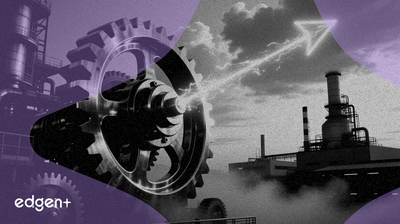
## 执行摘要 最近的财务数据显示,作为水、废水和雨水排放产品领先分销商的 **Core & Main (CNM)** 是一支值得关注的成长型股票。该公司的业绩特点是,相对于其所在行业,其盈利和现金流增长均表现出色,这在一个更广泛的市场叙事中提供了一个关键数据点:投资者资本可能正从高估值的科技股转向基本面强劲的工业和周期性公司,这些公司有望迎来经济上行。 ## 事件详情 根据 **Zacks Equity Research** 的分析,Core & Main 的财务状况预示着强劲的增长潜力。该公司今年的每股收益 (EPS) 预计将增长 **6.4%**,超过行业平均增长率 6.1%。更重要的是,Core & Main 表现出卓越的现金流生成能力,实现了 **15.2%** 的同比现金流增长。这一数字与行业平均水平 -1.6% 的下降形成了鲜明对比,突显了 CNM 的运营效率和强大的市场地位。 ## 市场影响 对 CNM 的关注与机构分析师预期的更广泛的市场转变相吻合。尽管以人工智能为中心的科技股主导了头条新闻,但与宏观经济繁荣的潜力相比,它们对盈利的影响仍然相对较小。**高盛**指出,周期性股票已连续 14 个交易日跑赢防御性股票,这是 15 年多来最长的连续记录。这一趋势表明,市场可能正在开始消化一段加速经济增长的时期,这传统上有利于对经济周期更敏感的工业公司。 ## 专家评论 金融专家们正日益强调周期性行业中的机遇。在最近的一份报告中,**高盛**指出:“在行业层面,我们预计 2026 年经济增长的加速将最大程度地提振周期性行业的每股收益增长,包括工业、材料和非必需消费品。” 该公司预计,到 2026 年,工业公司的每股收益增长将从 4% 飙升至 **15%**。 **Hightower Advisors 的 Stephanie Link** 也表达了这种观点,她将铁路运营商 **Union Pacific (UNP)** 认定为“2026 年两位数盈利增长的故事”,理由是对强劲经济和销量改善的预期。相比之下,福布斯 **Trefis 团队** 的分析表明,**特斯拉 (TSLA)** 等高飞科技股可能被过度高估,尽管最近对其人工智能发展持乐观态度,但仍将其股票标记为“没有吸引力”,原因是其“估值非常高”。 ## 更广泛的背景 当前的市场环境呈现出明显的分歧。一方面,**标普 500 指数** 取得了显著收益,这主要得益于少数几只大型科技股,如 **英伟达 (NVDA)**,它们目前约占该指数权重的三分之一。另一方面,越来越多的证据表明,将转向工业和周期性股票。像 **Modine Manufacturing (MOD)** 这样的公司,其报告称收入同比增长 12.3%,并拥有 95.23% 的机构所有权,就是这一趋势的例证。投资者似乎正在超越人工智能炒作,并开始为更广泛的经济扩张做好准备,届时工业公司将成为主要受益者。

## 执行摘要 2026年全球石油供应严重过剩的预测,正在加剧对埃克森美孚(XOM)溢价股票估值的审查。主要能源机构指出的预期供应过剩,引发了对未来大宗商品价格和公司盈利能力的担忧。 ## 事件详情 国际能源署(IEA)预测,2026年全球石油盈余将创历史新高,可能达到每天380万桶。ING Groep NV等其他分析也呼应了这一预测,认为市场盈余将不断增长。主要驱动因素包括非欧佩克国家(特别是在美洲)强劲的供应增长,以及欧佩克+决定开始解除减产措施。作为需求疲软的早期指标,沙特阿美最近将其针对亚洲的旗舰原油价格下调至五年来的最低点。 ## 市场影响 预计的供需失衡对埃克森美孚的盈利潜力及其相对于同行的股票溢价估值构成了直接挑战。该公司的财务业绩对大宗商品价格周期高度敏感,这在其2025年第三季度业绩中得到体现,当时营收下降5.1%至833亿美元,净利润在价格压力下下降8.3%至75.5亿美元。正如美国能源信息署(EIA)对2026年的预测,持续的低油价时期可能会压缩利润率并阻碍收益增长。 ## 专家评论 ING Groep NV大宗商品策略主管沃伦·帕特森(Warren Patterson)指出市场压力可能增加,他表示:“石油市场的盈余在2026年将会增长……盈余的规模和预期的库存累积应该会给远期曲线带来额外压力。”这种观点与IEA和EIA关于价格环境疲软的警告一致。 ## 商业战略与更广泛背景 尽管石油宏观经济前景看跌,但埃克森美孚的商业战略仍专注于运营执行和长期项目。该公司的估值得到了强大基本面的支持,包括42年的股息增长历史、3.31%的收益率和可持续的58%派息率。其资产负债表保持稳健,每股账面价值为61.79美元。 此外,其多数股权的加拿大子公司**帝国石油(IMO)**的指引显示了对生产的承诺。帝国石油预测,2026年上游产量为每天441,000-460,000桶油当量,资本支出为20-22亿美元。这一战略凸显了利用其高质量资产并保持产量以产生现金流的重点,即使更广泛的市场面临潜在石油过剩带来的不利因素。
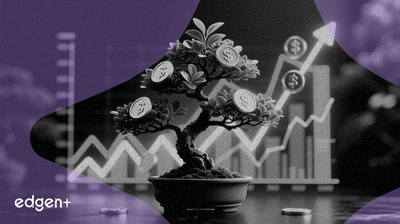
## 执行摘要 ProShares罗素2000股息增长ETF (**SMDV**) 因其在小型股领域战略性地关注股息增长而吸引了投资者的关注。作为一只“智能贝塔”基金,它偏离了传统的市值加权,根据特定的质量指标选择成分股。该ETF旨在通过瞄准那些具有向股东返还资本的成熟历史的公司,在通常波动性较大的小型股市场中提供更具防御性的态势,这一特征通常与更稳定的大型股公司相关。 ## ETF详情 **SMDV** 追踪罗素2000股息增长指数的表现。该指数的核心财务机制是其严格的筛选标准:它只包括罗素2000指数中连续至少十年成功提高年度股息支付的公司。这种方法作为一个强大的过滤器,剔除投机性或无利可图的公司,转而青睐那些表现出持续运营绩效和财务纪律的公司。通过关注这一股息增长因素,该ETF旨在捕获小型股市场中表现出质量和价值特征的细分市场,而不是不惜一切代价追求增长。 ## 市场影响 股息增长策略对小型股领域的投资组合构建具有重要意义。这一资产类别以其高增长潜力而闻名,但也以其较高的波动性和较高的业务失败率而著称。通过关注能够维持和增长股息的公司,该ETF隐含地筛选出具有稳定收益、强劲现金流和审慎管理的公司。 例如,**莫丁制造(Modine Manufacturing,MOD)**,一家热管理解决方案提供商,符合这一特征。该公司最近报告的盈利超出了预期,**每股收益1.06美元**,而预期为**0.97美元**,年收入同比增长**12.3%**。这种财务健康状况使得股东回报成为可能,并吸引了大量的机构关注,机构持股最近报告为**95.23%**。这种特征体现了股息增长策略旨在识别的那种财务稳健、对股东友好的公司。 ## 专家评论 围绕符合小型股价值和股息特征的公司的分析师情绪似乎具有建设性。**莫丁制造(Modine Manufacturing)** 目前持有“适度买入”的共识评级,平均分析师目标价为**182美元**。同样,分析师也对其他小型股价值股表现出青睐。例如,**SmartStop Self Storage REIT Inc. (SMA)** 最近从Stifel Nicolaus获得了重申的“买入”评级和**40美元**的目标价,而富国银行也维持了“买入”评级和**41美元**的目标价。 根据分析师Simon Yarmak的Stifel报告,由于房屋销售速度缓慢,投资者情绪正在转向存储等领域,他预计明年情况会有所改善。这一专家展望支持了财务稳健、商业模式清晰的小型股处于有利地位的投资论点。 ## 更广泛的背景 **SMDV** 采用的策略是从大型股世界借鉴的成熟策略,与“股息贵族”密切相关。像**宝洁(Procter & Gamble,PG)** 和 **强生(Johnson & Johnson,JNJ)** 这样的公司,通过数十年的不间断股息增长——分别为**68年**和**62年**——建立了它们的投资吸引力。**SMDV** ETF试图在风险/回报更高市场细分中复制这一成功模式。 投资者必须权衡利弊。小型股市场提供了比大型股市场更大的资本增值潜力。然而,这也伴随着更高的波动性,正如许多小型股(如**Equinox Gold (EQX)**)的贝塔系数为**1.69**所证明的那样。像**SMDV**这样的ETF试图通过将其投资组合锚定在具有财务稳定性成熟记录的公司来减轻这种风险,从而在小型股增长和大型股质量之间提供潜在的桥梁。
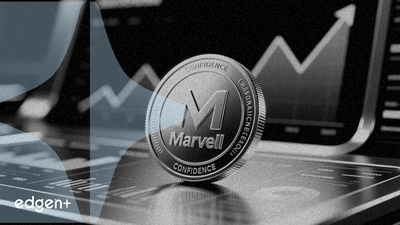
## 执行摘要 **美满电子科技(Marvell Technology, Inc.,纳斯达克代码:MRVL)**已宣布派发每股0.06美元的季度股息,此举重申了公司稳健的财务状况及其对资本回报计划的持续承诺。尽管这是一项例行声明,但在竞争激烈的半导体领域中,它仍是公司运营绩效持续稳定和现金管理严谨的关键指标。 ## 事件详情 **美满电子科技**董事会批准了普通股的常规现金股息。此金融工具的关键细节如下: * **股息金额**:每股0.06美元。 * **记录日期**:股东必须在2026年1月9日收盘前登记在册,方可享有资格。 * **支付日期**:股息将于2026年1月29日以电子方式支付给符合资格的股东。 此举代表了直接向股权持有人返还资本,并且是公司连续第349次派发季度股息,突显了其长期以来的股东回报政策。 ## 市场影响 根据市场分析,此次股息声明预计不会成为**MRVL**股价的重大催化剂。这是一个预定事件,已被投资者在很大程度上消化。主要影响是稳定性。对于注重收益的投资者而言,它巩固了美满电子科技作为高增长科技领域内可靠的派息实体地位。与不派息的成长型股票相比,这种支付的一致性可能对寻求增长和收益相结合的保守型投资组合更具吸引力。 ## 专家评论 市场对此次股息的看法官方定调为“**中性**”。金融分析师将此公告解读为对正常业务的确认,而非加速增长或财务困境的信号。主要的启示是负面事件的缺失,例如股息削减或暂停,那将引发对公司现金流和未来前景的担忧。正如一项分析所指出的,尽管该公告可能“对投资者情绪产生轻微的积极影响”,但“不太可能导致市场大幅波动”。 ## 更广泛的背景 美满电子科技一贯的股息政策是其更广泛公司战略不可或缺的一部分,该战略旨在平衡对人工智能和数据中心基础设施等高增长领域的再投资与向股东返还价值。这种方法将美满电子科技定位为一家成熟的科技公司,不同于那些将所有利润再投资的投机性成长型公司,也不同于像**美国电话电报公司(AT&T (T))**或**宝洁公司(Procter & Gamble (PG))**那样,以高收益股息作为其投资吸引力主要组成部分的成熟价值型公司。通过维持其股息,美满电子科技表明了对其长期财务健康状况和在半导体行业周期性波动中产生可预测现金流能力的信心。
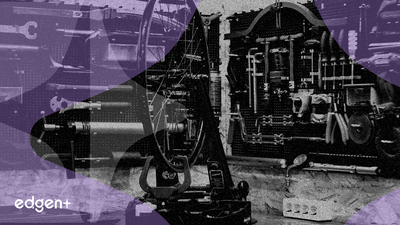
## 事件详情 **ResearchAndMarkets.com**的一份报告预测,到**2032年**,全球热成型塑料市场将达到**288.6亿美元**,复合年增长率(CAGR)为**7.66%**。这一增长得益于多个关键工业领域对轻量化、成本效益高且高度可定制的塑料组件的持续需求。确定的主要驱动因素是**汽车**、**包装**、**医疗保健**和**电子**行业,这些材料在产品设计和制造中不可或缺。 ## 更广阔的背景:充满挑战的化工格局 热成型塑料的乐观预测与更广泛的全球化工行业状况形成鲜明对比。持续的产能过剩、需求疲软和高能源成本造成了充满挑战的运营环境。这体现在重大的企业重组和产能削减上。例如,**Westlake Chemical**宣布计划于2025年12月停止其在美国几家生产PVC、苯乙烯和其他大宗化学品的工厂的运营,理由是“持续且充满挑战的市场条件”。 这一观点得到了信用评级机构的呼应。**惠誉评级**指出,持续的产能过剩和难以实现的需求复苏将导致2026年全球化工行业的信贷风险增加。同样,**韩国工商会(KCCI)**预测,由于中国的供应过剩和原材料价格下降,该国2026年的石化产品出口将下降6.1%。 ## 市场影响 热成型塑料与大宗化学品前景的分歧凸显了关键的市场转变。虽然大宗化学品生产商面临利润压缩和供应过剩,但具有特定性能优势的专用材料继续保持强劲需求。热成型技术的增长与终端市场创新(更轻的汽车、先进的医疗设备和复杂的电子包装)相关联,其特性提供了独特的工程和成本优势。这一趋势表明价值正在从商品生产转向专业化、应用驱动的解决方案。 ## 战略与并购活动 尽管面临宏观经济压力,制造业和工业部门的并购活动仍保持韧性。**MergersandAcquisitions.net**最近的一份报告指出,2025年上半年交易量保持稳定,第二季度有442笔交易。战略买家为目标资产支付高额估值,中位数EV/EBITDA倍数达到**14.7倍**,较2024年的8.0倍显著增加。这表明了对优质资产的追逐,收购方专注于获取特定能力、规模以及进入热成型等高增长利基市场的机会。 > “2025年,工业并购活动在迈向2026年之际继续展现韧性和演变,战略买家愿意为能力和规模支付高溢价,而赞助商则投入更多资金进行平台整合。” 这种并购环境表明,成熟的化工和制造企业可能会寻求收购专业的热成型公司,以抓住增长机遇并实现多元化,摆脱大宗商品市场。
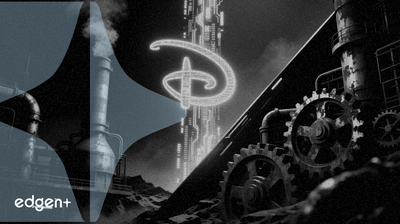
## 执行摘要 截至2025年12月15日,市场正在出现显著分歧。技术和人工智能正在展现加速增长和战略投资,例如**华特迪士尼公司(DIS)**与**OpenAI**合作,同时对**谷歌(GOOG)**提起法律诉讼的双重战略。科技领域的这种前瞻性势头与基础工业部门,尤其是化工行业,形成了鲜明对比,后者正发出收缩信号。**ICIS**和**惠誉评级**的报告指出,**Westlake**等公司关闭工厂,产能持续过剩,信用风险上升。这种分化进一步体现在**标普500指数**中科技股的集中度很高,少数超大市值股票正在推动整体指数表现,而工业板块则面临逆风。 ## 事件详情:两个行业的故事 ### 科技的积极推进 **华特迪士尼公司**在与人工智能领域互动方面采取了一项重要的双管齐下战略。该公司宣布**投资10亿美元并与OpenAI建立三年合作关系**,授权其角色IP用于**Sora**和**ChatGPT图像**等生成平台。该协议还为迪士尼提供了购买OpenAI额外股权的认股权证,旨在创建新的盈利渠道,同时明确排除使用人才肖像和声音。 与此同时,迪士尼对**谷歌**采取了防御姿态,发出了停止侵权函,指控其存在“大规模”版权侵犯行为。迪士尼要求谷歌停止使用其内容训练**Veo**和**Imagen**等人工智能模型。这种双重方法——与一个合作伙伴许可,同时与另一个合作伙伴提起诉讼——凸显了在新的人工智能环境中控制和利用其庞大知识产权组合的复杂策略。 ### 工业领域的防御性收缩 与此形成鲜明对比的是,工业化学品行业正在经历周期性低迷。**Westlake**宣布计划于2025年12月停止在美国的几家工厂的运营,这些工厂生产烧碱、苯乙烯、氯乙烯单体(VCM)和聚氯乙烯(PVC)。该公司援引“持续、充满挑战的市场条件”,预计停产的税前成本将达到**4.15亿美元**。 此举证实了更广泛的市场分析。**韩国商工会议所(KCCI)**的一份报告预测,由于中国的供应过剩和价格下跌,韩国2026年的石化产品出口将下降6.1%。这一情绪也得到了信用评级机构的呼应。 ## 市场影响:不断扩大的业绩差距 这些行业之间的分歧正在重塑投资格局。正如市场分析所详述,**标普500指数**正日益由少数科技公司主导。包括**英伟达(NVDA)**、**苹果(AAPL)**、**微软(MSFT)**和**Alphabet(GOOG)**在内的前十大持股,目前按市值权重计算占该指数的41%。这种集中度意味着对该指数的押注在很大程度上是对科技持续跑赢大盘的押注。 与此同时,以大宗商品为基础的工业企业显示出压力迹象。回顾**纽柯公司(NUE)**显示出强劲的历史回报,但其前景现在因“钢材价格走弱带来的潜在逆风”而蒙上阴影。同样,虽然黄金生产商**奥拉矿业(ORLA)**启动了股息以表明财务健康状况,但此举是在大股东**Fairfax Financial**出售2500万股股票的背景下进行的,这表明该行业面临资本压力。 ## 专家评论 华尔街的情绪反映了这种行业分化。迪士尼在发布人工智能公告后,获得了分析师的积极肯定: > **Wolfe Research**将其对迪士尼的目标价从133美元上调至134美元,并维持“跑赢大盘”评级,作为其2026年展望的一部分。 **巴伦周刊**也将**华特迪士尼**列入其“2026年值得购买的股票”名单,称其被低估且具有增长潜力。根据**TipRanks**的数据,共识12个月目标价约为**137.87美元**,评级为“强烈买入”。 对工业部门的评论则明显更加谨慎。**惠誉评级**就化工行业指出: > 持续的产能过剩和难以捉摸的需求复苏将导致2026年全球化工行业的信用风险不断增加。 这一观点得到了**ICIS**分析的支持,该分析预测全球乙烯和聚乙烯周期直到2028/2029年才会触底,即使有产能关闭。 ## 更广泛的背景:两极分化经济中的战略重心转移 企业正在积极调整其战略以应对这种两极分化的经济。迪士尼任命前**苹果**首席运营官**Jeff Williams**进入其董事会,预示着其将更深入地推动运营纪律和技术前瞻性模式。这种重心转移并非独一无二。 例如,**埃克森美孚(XOM)**正在将其产品解决方案部门到2030年的盈利目标提高**90亿美元**,并非通过扩大传统大宗商品化学品生产,而是通过专注于“优势项目”和高价值性能材料。这包括**Proxxima**聚烯烃热固性树脂和用于电池阳极的合成石墨等创新产品,这代表着从供过于求的大宗商品市场有意识地转变。 这些战略举措,从迪士尼拥抱人工智能到埃克森美孚专注于特种产品,突显了2026年的一个关键主题:适应。正如商业战略蓝图中所述,企业被迫优化效率、自动化和可扩展性,以在日益分化的全球市场中确保增长。

## 执行摘要 随着经济压力将基本面强劲的公司与较弱的公司分开,企业格局正在发生重大分化。投资者越来越多地寻求在具有韧性商业模式和持续股东回报的公司中避险,例如股息巨头 **宝洁 (PG)** 和 **强生 (JNJ)**。相比之下,**国际服务公司 (SCI)** 等公司正面临需求疲软和自由现金流恶化带来的巨大逆风,这凸显了一个惩罚财务脆弱性的市场。这一趋势为不良债务领域的冲突和复杂重组创造了沃土。 ## 分化的财务机制 这种分化在剖析这两个群体的财务业绩时最为明显。高质量的股息股票以其强劲的现金产生能力和对股东回报的承诺为特点。**宝洁 (PG)** 拥有 68 年的股息增长记录,在 2026 年第一季度报告其经营现金流飙升 26% 至 54 亿美元。同样,**强生 (JNJ)** 连续 62 年提高股息,其 2025 年第三季度营收增长 6.8% 至 240 亿美元,净利润飙升 91%。 相反,面临逆风的公司表现出明显的财务困境迹象。**国际服务公司 (SCI)** 正在与低需求和弱自由现金流作斗争,使其难以维持运营和投资者信心。这种状况在面临周期性低迷或结构性转变的行业中越来越普遍,推动它们走向财务重组。 ## 市场影响 这种日益扩大的分歧的主要影响是债务重组的环境更具争议性。欧洲不良市场提供了一个清晰的先例,分析师注意到“债权人之间暴力”的增加。在 **Selecta** 和 **Hunkemoller** 的案例中出现的激进负债管理操作 (LME) 和非按比例交易正变得越来越普遍,因为债权人为了维护自身利益而放弃合作。这种强硬做法表明,未来陷入困境的公司的重组将以激烈的法律战而非谈判和解为特征,从而增加了所有利益相关者的风险。 ## 专家评论 市场专家证实了日益激进的重组格局。一位专门从事该领域的律师对欧洲市场评论说:“手套已摘,通常没有谈判的借口。”Njord Partners 联合创始人 Arvid Trolle 也表达了同样的看法,他指出“利益相关者越是焦头烂额,他们的行为就越激进。” 在宏观经济方面,不确定性盛行。FTR 卡车运输副总裁 Avery Vise 指出潜在的经济疲软,称美联储最近的修订“意味着货运需求比我们想象的还要弱。”他警告说,这“增加了当货运需求确实恢复时市场更快更强劲收紧的可能性”,预示着未来的潜在波动。 ## 更广泛的背景 当前的市场分化迫使企业重新评估公司战略和价值。虽然高资本回报具有吸引力,但其可持续性至关重要。例如,**英特尔 (INTC)** 在过去十年中向股东返还了 920 亿美元,但现在面临收入负增长和 764.9 的高市盈率。这与 **宝洁** 等公司的策略形成对比,后者优先考虑稳定、可预测的现金流,以资助数十年不间断的股息增长。 这种对质量的追逐是对不确定经济环境的理性反应,从货运部门到欧洲债务市场的指标都指向持续的压力。因此,通过有韧性的商业模式产生持续现金流的能力已成为企业成功和生存的关键决定因素。

## 事件详情 2025年12月15日,扎克斯投资研究公司将三家科技行业的公司确定为顶级投资机会,并给予其 **Zacks Rank #1(强力买入)**评级。这些公司分别是全球社交媒体公司 **欢聚时代 (JOYY Inc. (YY))**、数据存储解决方案提供商 **希捷科技控股有限公司 (Seagate Technology Holdings plc (STX))** 以及流媒体平台 **Roku 公司 (Roku, Inc. (ROK))**。“收入股”分类值得关注,因为扎克斯模型是定量的,并且高度重视盈利预测修订,这表明分析师认为该群体具有积极的短期财务动能。 ## 解构“收入”标签 将 **Roku** 和 **欢聚时代** 等公司纳入“收入”范畴代表了一种非传统方法。历史上,收入投资主要集中在那些长期支付和增加股息的公司。例如,**希捷 (STX)** 更符合这种模式,提供股息,但其业务受硬件行业周期性影响。相比之下,**Roku** 和 **欢聚时代** 主要都是增长型公司,其投资理论建立在市场扩张和用户获取之上,而非直接的股东分红。 这种策略与对“股息贵族”(S&P 500 中连续至少 25 年增加股息的公司)的投资截然不同。这些公司因其财务稳定性和可靠的现金流而备受青睐,这些现金流为其股东回报提供资金。 ## 更广阔的背景:科技增长与传统股息 为了更好地理解扎克斯的选择,有必要与已建立的派息公司进行比较。例如,**宝洁 (Procter & Gamble (PG))** 拥有 68 年的股息增长记录,其商业模式建立在非必需消费品上,无论经济状况如何,都能确保稳定的现金流。同样,**强生 (Johnson & Johnson (JNJ))** 拥有 62 年的股息增长记录,其基础是防御性的医疗保健行业。这些公司提供波动性较低的回报和可预测的收入,这是传统退休投资组合的基石。 其他蓝筹公司,如 **埃克森美孚 (Exxon Mobil (XOM))** 和 **艾伯维 (AbbVie (ABBV))**,也拥有数十年的股息增长记录,分别提供 3.31% 和 2.93% 的收益率。尽管它们各自面临行业特定风险——**埃克森美孚**面临周期性能源价格风险,**艾伯维**面临复杂的资产负债表会计风险——但它们的战略重点仍然是向股东返还资本。 扎克斯将 **ROK** 和 **YY** 推荐为收入股,暗示了该术语的潜在重新定义,其中资本收益的潜力被隐性地与“收入”标签捆绑在一起。这暗示了一种以总回报而非纯粹股息收益率为目标的策略,吸引了风险偏好较高的投资者。 ## 市场影响 虽然扎克斯这样声誉卓著的研究公司给出的 #1“强力买入”评级可以暂时激发投资者兴趣,但其长期影响通常有限。市场将此类评级视为众多数据点之一。此次事件的主要意义在于,它反映了在传统上不与收入相关的行业中寻求价值。它强调了一种潜在的分析师观点,即这些特定科技公司近期的盈利增长可能足够强劲,足以产生股价升值,为那些原本寻求股息的投资者提供另一种形式的回报。然而,它也凸显了为稳定、基于股息的收入进行投资与为增长和资本增值进行投资之间的战略分歧。

## 执行摘要 **美国银行**已重申对 **雪佛龙公司 (CVX)** 的“买入”评级,同时将其目标股价小幅下调至每股 180 美元(此前为 183 美元)。这一信任票是在能源行业面临巨大逆风之际发出的,其中包括普遍存在的“石油供应过剩”论调和原油价格大幅走低的预测。雪佛龙自身的战略进展,特别是 30 亿澳元戈尔贡三期液化天然气项目的批准,为公司特定优势与宏观经济压力之间的冲突提供了支撑。 ## 事件详情 主要催化剂是 **美国银行** 对 **雪佛龙** 持续看涨的立场。该公司的分析表明,尽管近期市场疲软,但 **雪佛龙** 的基本面仍然足够强劲,足以获得“买入”评级。目标股价小幅下调至 180 美元反映了对更广泛市场环境的重新校准,而不是对公司运营能力的信念改变。 与此同时,**戈尔贡合资企业** 的合作伙伴正式批准了戈尔贡三期项目。这项 30 亿澳元的举措是一项重大的资本投资,旨在提高主要液化天然气设施的长期供应完整性,这表明即使近期大宗商品价格面临压力,也仍致力于未来的生产。 ## 市场影响 **雪佛龙** 的股票陷入了看涨的公司特定新闻和看跌的行业整体情绪之间的拉锯战。美国银行的评级提供了强烈的机构支持信号,可能会为该股票设定一个价格底部。然而,这被两个可能造成波动的关键因素所抵消: 1. **疲软的油价预测:** **美国能源信息署 (EIA)** 预测,全球石油库存将持续增长至 2026 年,预计当年 **布伦特** 原油的平均价格约为 **每桶 55 美元**。这样的价格水平将显著压缩所有超级巨头的利润。 2. **领导层不确定性:** 最近的报道证实,首席执行官 **迈克·沃思 (Mike Wirth)** 正在与董事会进行继任讨论。虽然这是标准的治理程序,但领导层过渡的前景可能会引入战略连续性的不确定性,特别是对于一家重视稳定性的、以股息为导向的公司而言。 **雪佛龙** 在 **二叠纪盆地** 广泛的低成本运营是其重要的防御,即使在低油价环境中也能提供弹性并保持积极的现金生成潜力。 ## 专家评论 **美国银行** 的分析是对该股票的关键专家评论。通过维持其“买入”评级,该机构暗示相信 **雪佛龙** 的战略执行、资本纪律和投资组合实力——包括盈利的 **二叠纪** 资产和像 **戈尔贡** 这样的长期液化天然气项目——足以应对预期中的油价疲软时期。这一行动表明,市场可能过于关注宏观的“供应过剩”论调,而低估了该公司持久的运营和财务优势。 ## 更广泛的背景 **雪佛龙** 所面临的形势是整个能源超级巨头综合体所面临挑战的缩影,包括 **埃克森美孚 (XOM)**、**壳牌 (SHEL)** 和 **英国石油 (BP)** 等同行。整个行业都必须应对 **国际能源署 (IEA)** 和 **美国能源信息署 (EIA)** 指出的未来几年将出现显著供应过剩的预测。在这种环境下,投资者正在根据执行力和资产负债表实力来区分公司。**雪佛龙** 在核心资产(如二叠纪)中管理成本的同时批准主要长周期项目的能力,将是其在市场消化新的、更长期低油价情景下相对于同行的表现的关键决定因素。
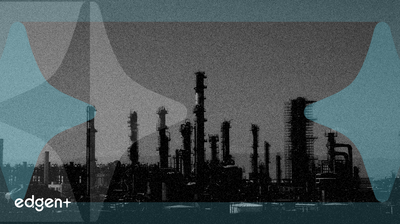
## 执行摘要 埃克森美孚宣布了两项重大进展:首席财务官凯瑟琳·A·米凯尔斯(Kathryn A. Mikells)计划于2026年2月1日退休,以及上调其2030年的财务目标。公司将盈利和现金流前景的改善归因于专有技术的成功部署以及二叠纪盆地运营的持续高绩效。这项双重声明使公司能够在关键领导层过渡期间展现长期稳定性。 ## 事件详情 首席财务官的过渡是一项计划中的事件,米凯尔斯女士因健康原因计划退休,这使得在未来一年内能够有序地进行职责交接。对公司投资故事而言,更核心的是其2030年财务目标的修订。通过上调盈利和现金流目标,**埃克森美孚 (XOM)** 对其战略方向投下了强烈的信任票。公司明确指出,其技术组合和二叠纪资产的效率是此次上调预测的基础,这表明公司预计将从其核心业务中获得更高的回报。 ## 市场影响 首席财务官过渡的延长时限预计将减轻市场不确定性,使投资者能够在不立即担心中断的情况下消化这一变化。更具影响力的是修订后的财务指引。在一个投资者高度关注资本纪律和股东回报的行业中,上调长期目标是一个重要的看涨信号。这表明**埃克森美孚**预计将产生强劲的自由现金流,这是资助股息和股票回购的主要来源。此举与**英国石油 (BP)** 和 **壳牌 (Shell)** 等欧洲主要企业的复杂战略叙述形成对比,后者因其能源转型支点而面临投资者质疑,并持续面临平衡绿色投资与油气盈利能力的压力。 ## 专家评论 尽管目前没有关于此次公告的具体专家评论,但该消息将根据当前分析师对能源行业的关注进行评估。分析师一直在仔细审查石油巨头维持股票回购计划和股息的能力,尤其是在大宗商品价格波动期间。例如,最近对**壳牌 (SHEL)** 和 **英国石油 (BP)** 的分析集中在其现金回报框架、补充储量的并购策略以及其低碳业务的财务可行性上。**埃克森美孚**的公告很可能通过这一视角获得好评,因为它强化了从其核心上游资产中实现价值最大化的明确承诺。市场关注的关键问题将是新目标的可靠性以及它们如何转化为每股价值增长。 ## 更广泛的背景 **埃克森美孚**的此次战略更新发生在全球能源行业应对复杂格局之际。主要企业正在平衡股东对回报的需求与长期脱碳的需求。据报道,**英国石油**正在洽谈出售其嘉实多业务,以超过80亿美元的资金支持其战略,而**壳牌**正在寻求在美国墨西哥湾进行数十亿美元的收购,以增强其上游投资组合。**埃克森美孚**对二叠纪资产和专有技术的关注,其中可能包括碳捕获和其他低碳解决方案,代表了一种巩固其传统优势同时为低排放未来做准备的战略。这种以运营执行和明确财务目标为中心的方法,可能比欧洲同行更多元化且有时不那么明确的战略更能吸引寻求更直接价值主张的投资者。

## 执行摘要 艾默生 (EMR) 宣布了一项双管齐下的战略更新,巩固其在工业自动化领域的领导地位,同时巩固其作为一流收益型股票的地位。该公司正与 **Armexa** 开展全球合作,为其 **DeltaV** 自动化平台提供集成的运营技术 (OT) 网络安全服务。与此同时,艾默生延续了其长期以来的股东回报记录,宣布连续第 68 次年度股息增长。这些行动使艾默生能够利用对强化的工业安全的迫切需求,同时彰显其财务稳定性和回馈投资者的承诺。 ## 事件详情 艾默生与 **Armexa** 的合作将把网络安全服务直接嵌入到 **DeltaV** 控制系统(一个广泛用于工业环境的平台)中。这些集成服务计划于 2025 年初向客户提供,直接回应了针对 OT 环境日益升级的网络威胁。 在财务方面,公司董事会于 2025 年 11 月批准了 5.2% 的股息增长。这标志着连续第 68 年增加年度股息,这一记录使艾默生跻身于可靠的创收公司精英行列。 ## 市场影响 艾默生对 OT 安全的战略关注是对一个有据可查且日益增长的威胁的直接回应。根据 **Brattle Group** 和网络安全公司 **Dragos** 最近的一份报告,关键基础设施,特别是电网级电池储能系统 (BESS),面临着来自民族国家行为者日益增加的攻击风险。这些系统是部署太阳能和风能等可变能源的基础。财务风险很高;100 兆瓦设施的单次四小时停电可能导致高达 120 万美元的收入损失。通过将其安全集成到其核心产品中,艾默生正在解决一个重要的客户漏洞,并将其自身定位为基础设施弹性方面的重要合作伙伴。 从投资角度来看,股息增长进一步将 **艾默生** 区分为“股息贵族”。其连续 68 年的增长记录超过了其他备受推崇的股息支付者,例如 **可口可乐 (KO)**、**埃克森美孚 (XOM)** 和 **雪佛龙 (CVX)**。这种一致性受到以收入为中心的投资者的高度重视,在经济不确定性环境下提供了具有吸引力的防御性“债券代理”品质。 ## 专家评论 专家们越来越多地认为,主动防御是应对复杂网络威胁的唯一可行策略。网络安全分析师也呼应了这一观点,他们指出经济制裁不足以阻止民族国家攻击。一份报告强调了“通过拒绝威慑”的原则,指出:“你不能通过制裁来摆脱供应链妥协。最可靠的威慑形式是……使目标变得如此坚固、如此精密、如此良好管理,以至于进入和留下的成本高于你可以窃取或破坏的价值。” 这一观点得到了工业安全专家的评论证实。 **Dragos** 现场首席技术官 **Phil Tonkin** 最近指出了新兴能源资产的战略重要性: > “电池储能系统正被用于整个电网,以实现太阳能和风能等可变需求来源的部署。这种日益增长的依赖性使它们成为一个有吸引力的目标。” ## 更广阔的背景 **艾默生** 与 **Armexa** 之间的合作体现了工业制造和网络安全的关键融合。随着工业流程变得更加数字化和互联,它们的攻击面随之扩大,使得集成安全解决方案变得必不可少而非可选项。艾默生的战略似乎是现代工业巨头的蓝图:在网络安全等高增长、关键任务邻近领域进行创新,同时保持财务纪律和股东回报,从而建立长期的投资者信任。这种平衡的方法使公司能够在不牺牲其稳定性和可预测资本回报声誉的情况下追求增长。

## 事件详情 包括**Kinder Morgan (KMI)**、**Enterprise Products Partners (EPD)**和**Williams Companies (WMB)**在内的中游能源公司,因其独特的商业模式——旨在产生稳定、可预测的现金流——正吸引投资者的关注。与能源行业的其他参与者不同,这些公司相对不受石油和天然气价格波动的影响。它们的收入主要来自通过管道及相关设施运输和储存商品的长期、基于费用的合同。这种运营结构提供了持续的收入流,支撑了它们提供可靠股息的能力。 ## 市场影响 当前的宏观经济环境增强了中游运营商的吸引力。标准普尔500指数的股息支付率接近30年低点,企业有充足的能力增加股东派息。此外,随着经济学家预测美联储可能降息,股息股票提供的收益率与固定收益工具相比变得更具吸引力。 这种稳定性与能源和工业领域其他地方出现的风险形成对比。例如,**Air Products & Chemicals (APD)**在放弃几个资本密集型清洁能源项目后,股价大幅下跌,导致23亿美元的税后费用。这一事件凸显了市场对经过验证的、能产生现金的商业模式的偏好,而非投机性增长叙事,中游能源公司恰好符合这一类别。 ## 专家评论 市场对该行业的情绪是积极的,并对选定的公司有具体认可。在CNBC上,Jim Cramer建议**Enterprise Products Partners (EPD)**是投资者“希望持有”的股票。这与更广泛的分析师观点一致,即在当前气候下,能源行业作为“债券替代品”受到青睐。根据Wolfe Research的Chris Senyek的说法,2026年的市场可能偏爱股息增长强劲的公司,这进一步强化了稳定收益股票的战略吸引力。 ## 更广泛的背景 对中游能源的关注反映了向防御性、创收资产更大范围的战略转变。这些公司正被视为与**Exxon Mobil (XOM)**和**Chevron (CVX)**等“股息贵族”类似,后者拥有长达数十年的股息增长记录。虽然中游公司可能不像科技或投机性能源企业那样总是提供相同的高增长潜力,但它们为寻求投资组合稳定性和持续收入的投资者提供了持久的价值主张。这使它们成为那些希望在不确定的全球经济中规避风险同时获取收益的核心持仓。

## 执行摘要 美国联邦储备理事会最近将利率下调25个基点,加上随后暗示2026年可能进一步降息的评论,正在重塑投资策略。尽管科技行业表现出波动性,但市场参与者越来越关注派息股票以获取稳定收入。鉴于标普500指数的股息派息率处于几十年来的低点,企业似乎资本充足,有能力增加股东回报,这使得派息股票成为当前宏观经济环境中的一个焦点。 ## 事件详情 美联储决定下调基准利率的同时,也发出了可能暂停降息的信号,这反映出委员会内部存在分歧。然而,美联储主席杰罗姆·鲍威尔表达了对劳动力市场“显著下行风险”的担忧,这被投资者解读为鸽派立场。这刺激了债券市场的反弹,并使道琼斯工业平均指数创下历史新高,尽管科技股因**甲骨文**和**博通**等公司的警告而受挫。随后,10年期美国国债收益率最终收于4.186%,表明对未来利率走向的持续不确定性。 ## 市场影响 较低的利率环境从结构上提高了派息股票相对于国库券等固定收益工具的吸引力。由于政府债券收益率受到抑制,投资者有动力寻求替代收入来源。目前标普500指数约30%的股息派息率是一个关键数据点,因为它表明公司拥有显著的财务灵活性,可以在不给资产负债表带来压力的情况下启动或增加股息分配。这种动态使以股息为中心的策略有利于资本增值和收入产生。 ## 专家评论 市场分析师主张采取一种战略性配置,平衡高当前收益率与股息增长潜力。Wolfe Research的Chris Senyek指出,2026年的市场可能更青睐“增长更快的公司,这往往更多体现在股息增长方面。”这种观点支持双管齐下的方法: * **高收益“债券替代品”:** **埃克森美孚(XOM)**和**雪佛龙(CVX)**等能源巨头因其高收益率(分别为3.35%和4.52%)和悠久的派息历史而被提及,这使得它们在低利率环境中具有吸引力。 * **股息增长冠军:** **可口可乐(KO)**等“股息贵族”拥有连续50多年的股息增长记录,提供了稳定性和向股东返还资本的良好记录。同时,**联邦快递(FDX)**等公司,其派息率低至32.63%,被认为是未来股息增长的有力候选者。 ## 更广阔的背景 重新关注股息与近期在科技领域观察到的高波动性形成了对比,尤其是在人工智能主题方面。此外,**空气产品与化学公司(APD)**的案例也提供了一个警示。这家工业气体公司的股票在其战略从资本密集型能源项目转向后下跌了25%,导致23亿美元的税后费用,这表明即使是历史上稳定的公司也无法幸免于战略失误。在全球范围内,英格兰银行、欧洲中央银行和日本银行的货币政策分歧,以及德国和日本不断上升的债券收益率,可能会继续对美国国债收益率施加上行压力,为投资者创造一个复杂的导航环境。
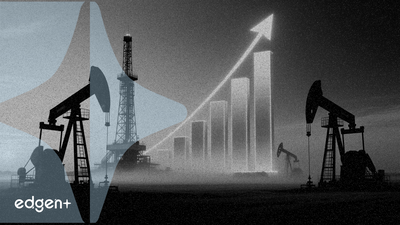
## 执行摘要 超级巨头部署的技术进步和运营效率正在使美国石油产量维持在创纪录水平,直接挑战了即将达到峰值的预测。二叠纪盆地预计将达到每日676万桶(bpd)的创纪录产量,这突显了向最大化现有资产产出的战略转变。英国石油公司(**BP**)在墨西哥湾加速进行的亚特兰蒂斯钻井中心1号扩建项目等进一步证明了这一趋势,该项目巩固了美国在全球能源市场中作为关键摇摆生产商的地位。 ## 事件详情 与普遍预期的产量峰值相反,二叠纪盆地正在经历一次激增,本月产量预计将达到历史新高676万桶/日。这种稳定和增长主要归因于**埃克森美孚**和**雪佛龙**等超级巨头的战略,它们正在利用技术提高钻井效率和资源回收率。 这一运营战略的一个主要例子是**英国石油公司(BP)**最近在墨西哥湾的活动。该公司将其亚特兰蒂斯钻井中心1号扩建项目投入运营,这是其2025年提前启动的第五个主要项目。该项目是连接到现有亚特兰蒂斯平台的两口水下回接井,预计将每日增加约15,000桶油当量(boed)。此次扩建是**英国石油公司(BP)**到2030年将其墨西哥湾产量增加到40万桶油当量以上,并将其美国总产量增加到约100万桶油当量计划的关键组成部分。 ## 市场影响 二叠纪盆地持续的高产量使美国石油产量稳定在每日近1350万桶,巩固了该国作为全球摇摆生产商的地位。这种生产水平为全球供应链提供了重要的缓冲,有能力影响原油价格。此外,推动这一产量的效率提升降低了生产商的盈亏平衡成本。这种财务弹性使得美国产量即使在价格较低的环境下也能保持强劲,从而可能导致市场波动性降低和稳定的长期供应前景。 ## 专家评论 高管们肯定了这种纪律性增长的战略。**英国石油公司(BP)生产和运营执行副总裁戈登·比雷尔(Gordon Birrell)**就亚特兰蒂斯扩建项目发表了以下声明: > “该项目支持我们安全发展上游业务的计划,其中包括到2030年将美国产量增加到每日约100万桶油当量。” **英国石油公司(BP)墨西哥湾和加拿大高级副总裁安迪·克里格(Andy Krieger)**也指出了对现有基础设施的关注: > “亚特兰蒂斯的此次扩建进一步证明了最大限度地提高我们位于美国墨西哥湾现有平台生产的益处,安全高效地增长英国石油公司(BP)的美国海上能源生产。” ## 更广泛的背景 这一趋势凸显了能源超级巨头从纯粹勘探转向优化现有资产生产的战略转变。公司越来越多地使用先进技术,例如将新井连接到现有平台的水下回接系统,以最大限度地提高资本效率并加快项目时间表。这种方法,在**英国石油公司(BP)**的墨西哥湾项目和**雪佛龙(Chevron)**在澳大利亚利用**德希尼布福马克(TechnipFMC)**的Subsea 2.0®系统进行的戈尔贡三期开发项目中可见,代表着一个成熟的、数据驱动的生产阶段。它侧重于从已探明储量中提取更多价值,而不是仅仅依赖高风险、高成本的绿地勘探,预示着行业将采用更可持续和可预测的运营模式。

## 执行摘要 埃克森美孚已对其二叠纪盆地的运营进行了战略性改革,实施了一系列分层技术系统,以提高页岩开采的经济可行性。主要目标是将资源采收率翻倍,这标志着从勘探转向最大化现有资产的效率和产出。这一举措反映了更广泛的行业趋势,即利用数字和运营技术在竞争激烈的市场中降低成本并增加产量。 ## 事件详情 埃克森美孚正押注于一种“可堆叠”或“分层”的技术方法来重塑页岩生产。这并非单一技术,而是旨在协同工作的一系列协同进步。该技术栈包括实时数据分析、自动化和新化学配方的集成,以优化开采过程的每个阶段。尽管未披露具体的专有工具,但该模型与全行业在数字化转型方面的努力相似。例如,**SLB**和**壳牌**之间合作,在SLB的Lumi™数据平台上共同开发人工智能解决方案,旨在实现类似的运营收益。埃克森美孚的具体目标是将其二叠纪资产的资源采收率翻倍,这将大大增加其持有的价值和生产寿命。 ## 市场影响 对于**埃克森美孚 (XOM)** 而言,成功地使采收率翻倍将显著降低每桶盈亏平衡成本,提高资本效率,并在无需大量新勘探资本支出的情况下增加已探明储量。这一战略可以提高利润率并提供显著的竞争优势,尤其是在油价波动剧烈的环境中。这也标志着页岩生产工业化的一次转变,专注于可预测、可重复且技术驱动的效率提升,而非投机性钻探。 ## 专家评论 这一举动与能源行业技术领导者的评论一致。正如**SLB数字业务总裁Rakesh Jaggi**在谈到另一项合作时所指出的那样,“能源行业正在被数字和人工智能重塑。”他强调,此类合作促成了“先进的数字和代理人工智能解决方案,通过自动化和自主性改变了我们行业的工作方式,从而在整个上游领域创造价值。”埃克森美孚的这项举措是这一原则的直接应用,旨在将数据驱动的洞察转化为可测量的产量增长。 ## 更广阔的背景 埃克森美孚的战略是全球能源行业更大范围转型的一部分。它与**Equinor**等公司所采用的策略一致,Equinor正在开发其Johan Castberg油田作为中心枢纽,以连接更小的卫星发现,从而最大限度地利用现有基础设施。此外,二叠纪盆地自动化使用的增加,例如**Aurora Innovation**和**Detmar Logistics**部署自动驾驶卡车运输压裂砂,强调了该地区作为提高效率技术的试验场的作用。总而言之,这些趋势表明战略重点放在从现有资产中获取最大价值,而不是仅仅依赖高风险、高成本的前沿勘探。